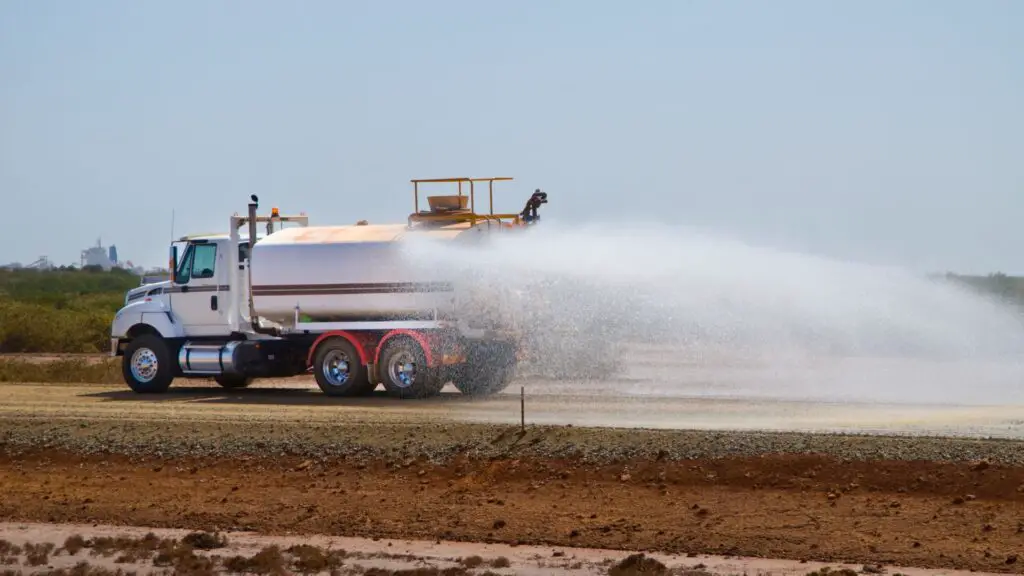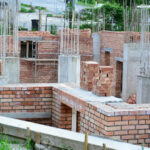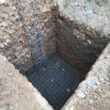Construction sites are bustling hubs of activity, with heavy machinery, power tools, and workers carrying out various tasks to bring impressive structures to life. However, amidst the progress and excitement, one persistent issue has plagued construction sites for decades: dust.

Why dust?
Construction activities generate substantial amounts of dust particles that can be harmful to both workers and the environment. Thankfully, advancements in technology have led to the development of innovative dust mitigation solutions, including highly effective dust collection systems. These systems not only promote a healthier work environment but also contribute to sustainable construction practices.
Dust – is it bad?
Dust is an unavoidable byproduct of construction activities such as cutting, drilling, grinding, and excavation. The fine particles released into the air during these processes pose significant health risks to workers. Prolonged exposure to construction dust can lead to respiratory problems, eye irritation, and allergic reactions. Furthermore, certain types of construction dust, such as silica dust, contain hazardous substances that can cause long-term health complications, including lung diseases like silicosis.
Systems to mitigate dust
Recognizing the need for effective dust control measures, construction companies and equipment manufacturers have invested in developing advanced dust collection systems. These systems are designed to capture and contain dust particles, minimizing their dispersion into the surrounding environment. By implementing dust collection systems on construction sites, companies can protect their workers from the harmful effects of dust inhalation.
Also Read: How To Choose the best Industrial Work Benches?
Powerful vacuum system
One of the key components of an efficient dust collection system is a powerful vacuum or suction mechanism. These systems utilize high-powered fans or blowers to create negative pressure, effectively pulling dust-laden air into the collection unit. The collected dust is then filtered and separated from the air, ensuring that only clean air is released back into the environment. This process helps maintain air quality and reduce the risk of airborne dust particles settling on nearby surfaces or being carried away by wind.
Modern dust collection systems are equipped with advanced filtration technologies that effectively capture even the finest dust particles. HEPA (High-Efficiency Particulate Air) filters, for example, are capable of trapping particles as small as 0.3 microns with an efficiency of 99.97%. This level of filtration ensures that construction dust, which often consists of particles within this size range, is effectively contained within the system.
Furthermore, some dust collection systems employ the use of cyclonic separators to enhance dust separation efficiency. These separators leverage centrifugal force to separate larger particles from the airstream before they reach the filters. By pre-filtering the air, cyclonic separators not only improve the overall performance of the system but also extend the lifespan of the filters, reducing maintenance and replacement costs.
In addition to their primary function of capturing dust, modern dust collection systems also incorporate features that enhance their usability and efficiency. Many systems are equipped with remote control capabilities, allowing operators to control and monitor the system from a distance. This feature is particularly beneficial in hazardous or hard-to-reach areas where manual intervention may pose risks to workers’ safety.
Like Us on Facebook!
Data analysis
Some dust collection systems also incorporate real-time monitoring and data analysis capabilities. These systems utilize sensors to measure dust levels in the air and provide instant feedback on air quality conditions. By collecting and analyzing this data, construction companies can gain valuable insights into dust generation patterns, identify potential hotspots, and implement targeted dust control measures. This proactive approach not only helps protect workers but also ensures compliance with environmental regulations.
Subscribe Us on YouTube!
Also Read: Creating Joyful Water Play Structures for Children’s Health and Well-being with Vortex international
Benefits
The benefits of incorporating dust collection systems on construction sites extend beyond worker safety. By effectively controlling dust emissions, these systems contribute to sustainable construction practices. Dust generated on construction sites often contains harmful pollutants that can contaminate nearby water bodies and soil, negatively impacting the environment. Dust collection systems help mitigate these risks by minimizing dust dispersion and preventing pollutants from entering sensitive ecosystems.
Moreover, the implementation of dust collection systems aligns with the growing global focus on sustainable construction and environmental stewardship. Construction companies that prioritize dust mitigation through the use of advanced collection systems demonstrate their commitment to reducing their ecological footprint. By investing in these technologies, they contribute to the preservation of air quality, soil health, and water resources in the vicinity of construction sites.
Furthermore, dust collection systems promote a cleaner and more organized work environment. Construction sites can be chaotic, with debris and dust accumulating on surfaces, equipment, and materials. By effectively capturing dust particles, these systems help maintain a cleaner workspace, reducing the need for frequent cleaning and improving overall productivity. A cleaner environment also enhances worker morale and creates a positive impression on clients and visitors.
Scope of dust collection system
It is worth noting that the benefits of dust collection systems are not limited to large-scale construction projects. These innovative solutions can be tailored to suit various scales of construction activities, from small renovation projects to major infrastructure developments. Construction professionals of all kinds can benefit from implementing dust collection systems as part of their standard practices.
As with any technological innovation, the adoption of dust collection systems may involve initial costs. However, the long-term benefits far outweigh the investment. The improved health and safety of workers reduce the risk of occupational illnesses and related expenses. Additionally, the prevention of environmental pollution and the associated legal and remediation costs provide significant savings in the long run. Furthermore, the positive public image gained from prioritizing worker safety and environmental protection can lead to new business opportunities and increased client trust.
The bottom line
In conclusion, dust collection systems have revolutionized dust mitigation practices in the construction industry. These innovative solutions effectively capture and contain harmful dust particles generated during construction activities, safeguarding the health and well-being of workers. Moreover, these systems contribute to sustainable construction practices by minimizing environmental pollution and promoting cleaner work environments.
By investing in dust collection systems, construction companies demonstrate their commitment to worker safety, environmental stewardship, and efficient project management. As the construction industry continues to evolve, embracing these technological advancements will become an integral part of responsible construction practices, benefiting both workers and the planet.
















